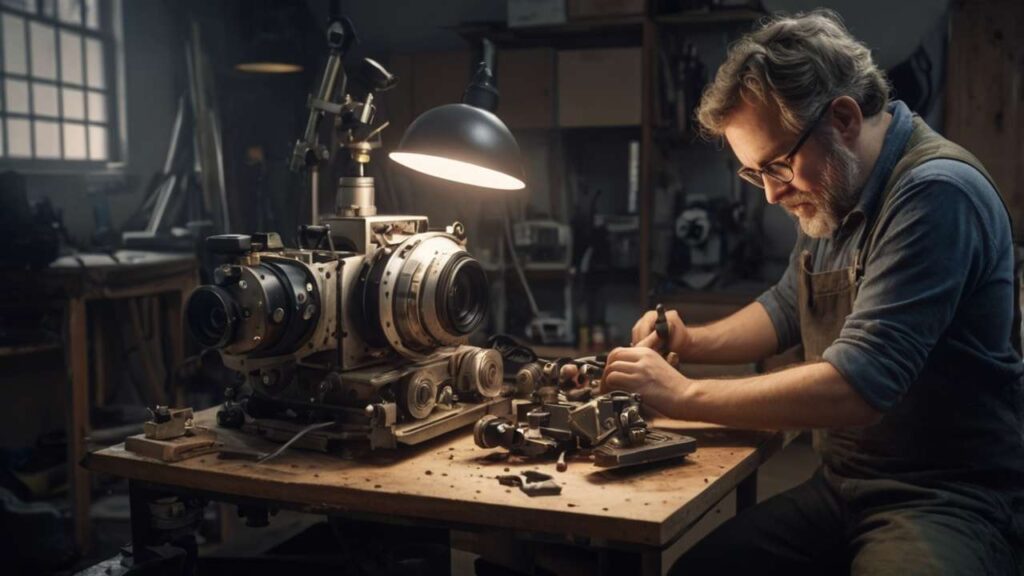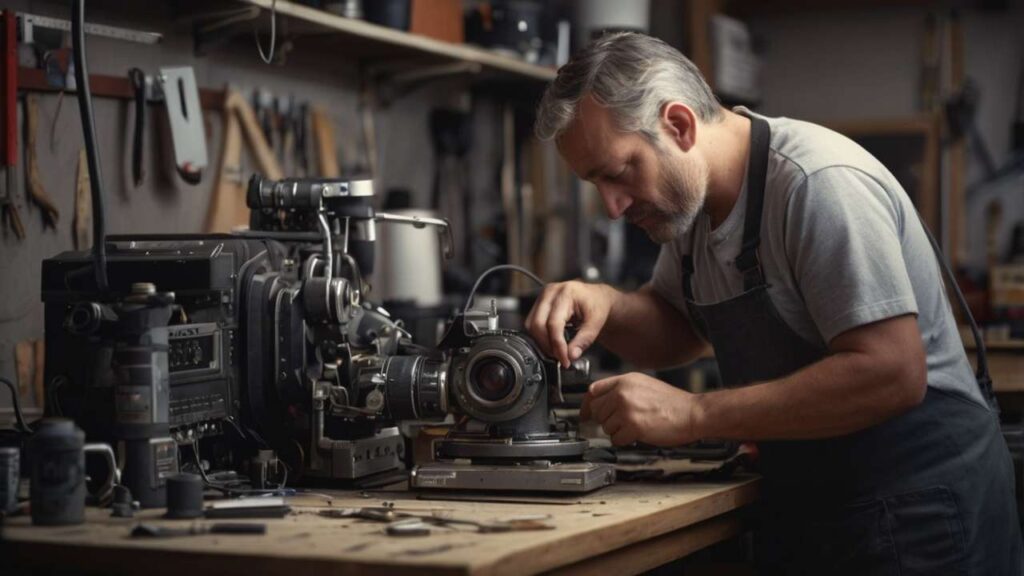It’s funny how most of us don’t realize the true value of a camera until it stops working properly. One day you’re capturing the perfect shot, and the next you’re staring at a black screen or a stubborn lens that refuses to move. Cameras are designed to be durable, yes, but they’re not invincible. Understanding common camera malfunctions isn’t about scaring you—it’s about giving you the awareness that these issues are real, they happen more often than people think, and more importantly, they need professional hands to be solved correctly.
I’ve seen photographers lose gigs simply because their shutter jammed at the worst moment, or a wedding shooter nearly cried because sensor dust ruined every white background photo. These are not rare accidents; they’re the kind of daily struggles camera technicians deal with. And trust me, you don’t want to be the one trying a DIY fix after watching a random YouTube video.
That’s why this guide is here. We’ll go through the most common camera malfunctions professionals encounter: shutter issues, lens troubles, sensor dust dilemmas, and water damage. Along the way, I’ll also touch on why reliable maintenance is better than emergency repair, and even bring up what future guides could explore for those who want to dive deeper into the world of camera care. For anyone in North Carolina or beyond, you’ll also discover resources like top-quality camera repair and services in North Carolina and a full camera repair knowledge hub that can help when trouble strikes.
Shutter Malfunctions: The Beating Heart of Your Camera
The shutter is basically the heartbeat of a camera. If it skips or stutters, the whole system feels dead. The most common shutter problems professionals see are:
- Stuck shutters – where it refuses to open or close. Sometimes you get a black photo, sometimes just a half-exposed weird image.
- Erratic shutters – firing randomly or at inconsistent speeds, which leads to blurry, unpredictable results.
- Error 99 – especially familiar to Canon users. It’s basically the camera’s way of saying, “Something is very wrong, and I won’t tell you exactly what.”
One of my friends once missed capturing his kid’s first soccer goal because his shutter locked up mid-game. It sounds trivial, but moments like that can never be repeated. Repairing a shutter usually requires opening the camera body, testing the electronic timing, and often replacing worn mechanical blades with new parts. Trusted repair shops use precision calibration tools—something no regular owner has lying around.
According to an expert repair technician I spoke with, “Shutter assemblies are designed for tens of thousands of clicks, but dust, humidity, or just heavy use will shorten that life. Replacing the shutter isn’t just about parts, it’s about recalibrating the whole timing system so your photos don’t drift in exposure.”
Lens Issues: From Fungus to Broken Autofocus
If the shutter is the heartbeat, the lens is the eyes. Unfortunately, lenses are more fragile than most people think. Professionals constantly face three recurring problems:
- Physical damage – scratches, cracks, or dents from drops. Even a small ding on the glass can ruin sharpness and create ghosting.
- Lens fungus – especially in humid regions like Indonesia or coastal North Carolina. It starts as a small cobweb inside and eventually spreads, eating into the lens coating.
- Broken autofocus motors – you’ll hear grinding sounds, or worse, no movement at all. Manual focusing still works, but for fast shoots, it’s a nightmare.
The tricky part? Many of these problems aren’t immediately obvious. I once tested a lens that looked spotless on the outside but showed faint haze when pointed at a bright background—it turned out fungus had already started. Cleaning that required UV light treatment and careful disassembly of every lens element, which is not something amateurs should even attempt.
Professional repair centers keep micro-tools, replacement motors, and sometimes even donor lenses to swap parts. That’s why relying on a trusted expert matters; otherwise, you risk making the lens worse.
The Sensor Dust Dilemma
Sensor dust is sneaky. At first, you don’t notice it. Then, one day while editing, you see the same dark little smudge in every sky photo. You try cleaning the lens, but it’s still there. That’s the giveaway sign: the dust is inside, sitting on the sensor itself.
Photographers sometimes attempt to blow it away with canned air, which often makes it worse. Professionals use specialized sensor swabs, anti-static brushes, and controlled clean-room environments. The danger isn’t the dust itself—it’s scratching the delicate sensor filter while trying to clean it. A single scratch could permanently ruin image quality, and sensor replacement costs as much as buying a new camera.
One of the best preventive steps is regular professional cleaning, something Beyond the Fix: Why Regular Camera Maintenance is the Best Preventive Care explains in detail. A bit of maintenance costs far less than emergency repair.
Water Damage: The Silent Killer
Water and electronics never mix. But you’d be shocked how many cameras end up water-damaged every year. Rain at weddings, spilled drinks at events, or even accidental drops in rivers. The initial instinct is usually panic, followed by throwing the camera into rice. Sadly, rice doesn’t fix corrosion.
I once heard about a local wedding photographer whose camera slipped into a pond during a shoot. She rushed it to a repair center within hours. The technicians immediately disassembled it, cleaned every board with isopropyl alcohol, and replaced a shorted capacitor. The camera survived because quick, professional action was taken.
The repair process for water damage often involves:
- Full disassembly of body and lens
- Drying with controlled heat and dehumidifiers
- Chemical cleaning of circuit boards
- Replacement of corroded parts
It’s meticulous, time-consuming, but if done right, the camera can live again. Ignore it for a day or two, and corrosion spreads everywhere.
Beyond Repairs: Why Maintenance is the Real Key
Let’s be honest—repairs are expensive, stressful, and usually happen at the worst possible time. That’s why experts push regular maintenance. Annual cleanings, firmware updates, and component checks can prevent 70% of breakdowns. Think of it like servicing a car; it may run fine today, but a trusted mechanic ensures it won’t suddenly fail on the highway tomorrow.
Articles like Behind the Lens: A Look at the Camera Repair Process from Start to Finish show how professionals don’t just “fix” but restore cameras to optimal health. And for those searching locally, guides like Finding the Right Fit: What to Look for in a Camera Repair Service in North Carolina help connect photographers with reliable technicians who actually care.
Extra Insights: What Future Topics Could Explore
While shutter, lens, sensor, and water issues are the top malfunctions, there’s so much more that readers deserve to know. Imagine a deep-dive article about battery failures and power board replacements, or a guide exploring viewfinder alignment problems that make every shot slightly crooked. Another potential angle is firmware glitches that confuse owners into thinking the hardware is broken, when in fact a software update solves it.
Even accessories play a role. A faulty memory card or a damaged hot-shoe connection can mimic major camera malfunctions. These aren’t headline-grabbing issues, but in real-life shooting, they’re just as frustrating. Bringing these into future guides ensures the conversation isn’t just about fixing broken gear—it’s about keeping every part of the system reliable.
Case Study: A Real Story That Proves the Point
One of the most inspiring stories I came across was from a landscape photographer in Asheville, NC. He dropped his DSLR during a hike, cracking the lens mount and damaging the shutter. Instead of giving up, he brought it to a trusted repair center. Within two weeks, with a combination of replacement parts and recalibration, his camera was back in service. He later said, “That repair didn’t just save my camera, it saved my career.” Real proof that expert services are more than just technical—they’re life savers.
FAQs
Q1: How do I know if my camera needs professional repair?
If you see repeated error messages, strange noises, blurry spots that don’t go away with lens cleaning, or the camera fails to power on consistently, it’s time to seek a trusted expert.
Q2: Can I clean my camera sensor at home?
Technically yes, but it’s risky. Professionals use special tools and environments. Doing it yourself without training could scratch the sensor and cause permanent damage.
Q3: Is it worth repairing an old camera?
It depends. For professional models, yes, repairs are often worth it because replacement costs are high. For budget models, sometimes upgrading is more cost-effective. A reliable technician can give honest advice.
Final Thoughts and Call to Action
At the end of the day, understanding common camera malfunctions is less about knowing every detail and more about respecting your equipment. Shutter failures, lens fungus, sensor dust, and water damage are all fixable with professional care—but preventable with regular maintenance.
If this article gave you some clarity or helped you realize your own camera might need a check-up, don’t keep it to yourself. Hit the share buttons below and let your fellow photographers know. Who knows, you might save someone’s once-in-a-lifetime shot.
For more insights, tips, and access to reliable services, visit the camera repair hub or the main resource at Pro Service Tips.


